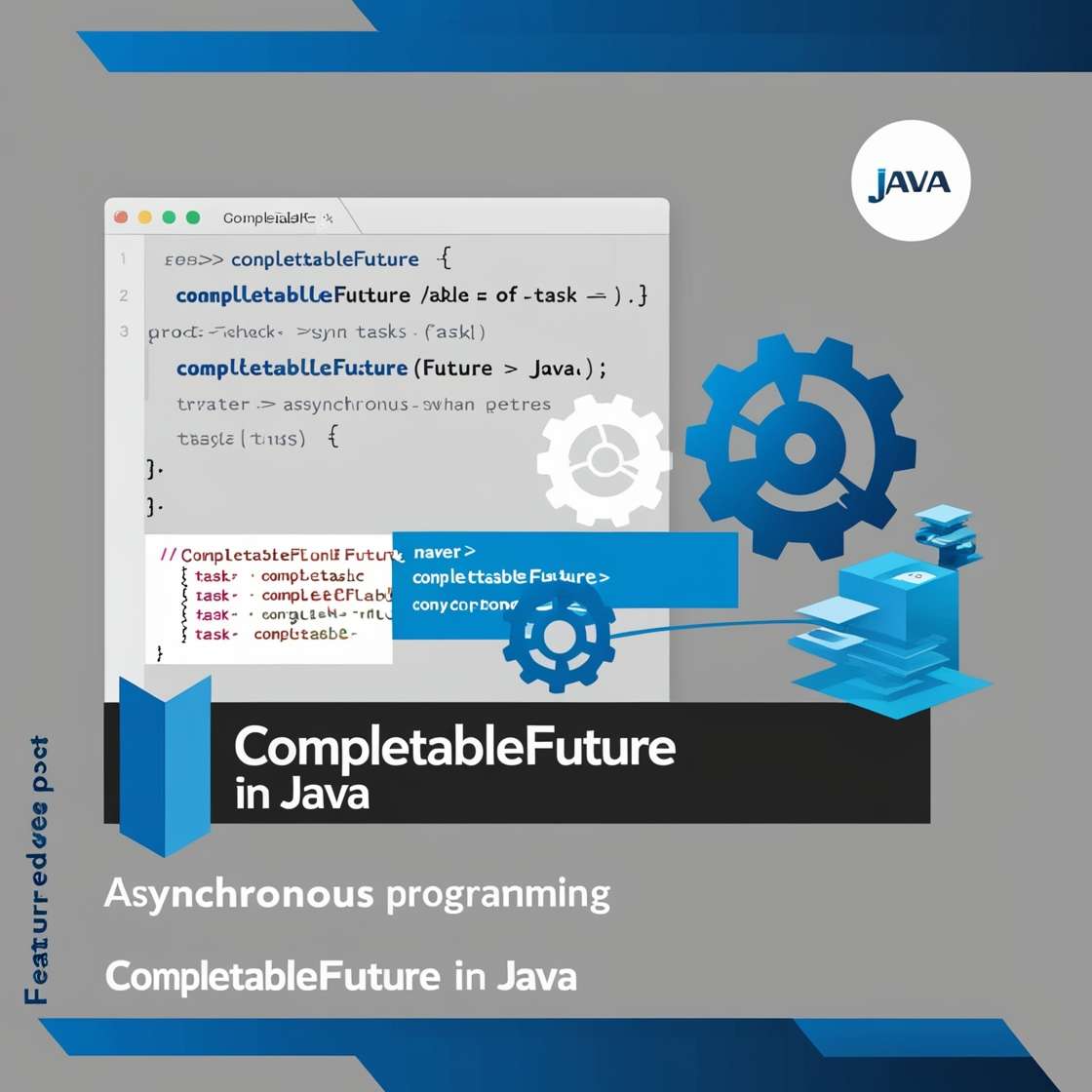In today’s fast-paced software development world, asynchronous programming is essential for building efficient and responsive applications. Java provides a powerful tool for managing asynchronous tasks through the CompletableFuture class. In this blog post, we’ll explore what asynchronous programming is, how CompletableFuture in java fits into this paradigm, and how you can leverage it to write cleaner and more performant code.
Understanding Asynchronous Programming
Before diving into CompletableFuture, it’s important to understand the concept of asynchronous programming.
Asynchronous Programming is a programming paradigm that allows a program to perform tasks in the background without blocking the main thread. This is particularly useful in scenarios where you have tasks that involve waiting, such as:
- I/O operations: Reading from or writing to files, network communications, etc.
- Long computations: Tasks that take a significant amount of time to complete.
- User interactions: Operations that should not freeze the user interface, such as responding to clicks or input.
In traditional synchronous programming, if a task takes time to complete, it blocks the execution of subsequent tasks. For example, if you have a method that reads data from a file, the program must wait until the file reading is complete before it can continue executing the next line of code. This can lead to inefficient use of resources and a poor user experience.
Asynchronous programming allows your program to continue executing while the time-consuming task is being processed. This is achieved using constructs such as callbacks, promises, and futures, which enable your program to handle multiple operations concurrently.
What is CompletableFuture in Java 8?
Introduced in Java 8, CompletableFuture is part of the java.util.concurrent package. It represents a future result of an asynchronous computation. Unlike the traditional Future interface, CompletableFuture provides a more flexible and comprehensive API for handling asynchronous programming.
Key Features of CompletableFuture
- Non-blocking Operations:
CompletableFutureallows you to execute tasks asynchronously without blocking the main thread. - Pipeline Support: It supports chaining multiple asynchronous tasks, making it easy to handle complex workflows.
- Exception Handling: It provides robust methods for handling exceptions that might occur during asynchronous execution.
- Combine Futures: You can combine multiple futures to achieve more complex asynchronous workflows.
Basic Usage of CompletableFuture
Let’s start with a basic example to understand how CompletableFuture works. Suppose you want to perform a simple asynchronous computation of adding two numbers.
import java.util.concurrent.CompletableFuture;
public class CompletableFutureExample {
public static void main(String[] args) {
CompletableFuture<Integer> future = CompletableFuture.supplyAsync(() -> {
// Simulating a delay
try {
Thread.sleep(1000);
} catch (InterruptedException e) {
e.printStackTrace();
}
return 5 + 10;
});
future.thenAccept(result -> System.out.println("The result is: " + result));
}
}
In this example:
CompletableFuture.supplyAsyncstarts an asynchronous computation that adds two numbers.thenAcceptis a callback that is executed when the computation completes, printing the result.
Chaining Asynchronous Tasks
One of the powerful features of CompletableFuture is the ability to chain multiple asynchronous tasks. Let’s enhance the previous example to include a second computation that multiplies the result.
import java.util.concurrent.CompletableFuture;
public class ChainingExample {
public static void main(String[] args) {
CompletableFuture<Integer> future = CompletableFuture.supplyAsync(() -> {
// Simulating a delay
try {
Thread.sleep(1000);
} catch (InterruptedException e) {
e.printStackTrace();
}
return 5 + 10;
});
CompletableFuture<Integer> chainedFuture = future.thenApply(result -> {
// Chaining another computation
return result * 2;
});
chainedFuture.thenAccept(result -> System.out.println("The final result is: " + result));
}
}
Here’s what happens in this example:
supplyAsyncperforms the initial addition.thenApplyis used to multiply the result by 2.thenAcceptprints the final result.
Combining Multiple Futures
Combining multiple futures is another powerful feature of CompletableFuture. Imagine you need to fetch user data and then fetch related posts concurrently. You can combine these futures as follows:
import java.util.concurrent.CompletableFuture;
public class CombiningFuturesExample {
public static void main(String[] args) {
CompletableFuture<String> userFuture = CompletableFuture.supplyAsync(() -> {
// Simulating user data fetching
return "User data";
});
CompletableFuture<String> postsFuture = CompletableFuture.supplyAsync(() -> {
// Simulating posts fetching
return "Posts data";
});
CompletableFuture<Void> combinedFuture = CompletableFuture.allOf(userFuture, postsFuture);
combinedFuture.thenRun(() -> {
try {
// Retrieve results from the futures
String userData = userFuture.get();
String postsData = postsFuture.get();
System.out.println("User Data: " + userData);
System.out.println("Posts Data: " + postsData);
} catch (Exception e) {
e.printStackTrace();
}
});
}
}
In this example:
- Two
CompletableFutureinstances are created for fetching user data and posts. CompletableFuture.allOfcombines these futures and ensures that both complete before proceeding.thenRunretrieves and prints the results once both futures have completed.
Handling Exceptions
Proper exception handling is crucial in asynchronous programming. CompletableFuture provides methods to handle exceptions effectively. Here’s an example:
import java.util.concurrent.CompletableFuture;
public class ExceptionHandlingExample {
public static void main(String[] args) {
CompletableFuture<Integer> future = CompletableFuture.supplyAsync(() -> {
// Simulating an error
if (true) {
throw new RuntimeException("Something went wrong");
}
return 10;
});
future.handle((result, ex) -> {
if (ex != null) {
System.out.println("Exception occurred: " + ex.getMessage());
return 0; // Default value in case of an error
}
return result;
}).thenAccept(result -> System.out.println("Result is: " + result));
}
}
In this example:
handleis used to process both the result and any exception that may have occurred.- If an exception is thrown, it is handled gracefully, and a default value is returned.
Conclusion
CompletableFuture is a versatile tool for handling asynchronous programming in Java. By understanding its core features and capabilities, you can write cleaner, more efficient code that handles asynchronous tasks with ease. Whether you’re chaining tasks, combining multiple futures, or handling exceptions, CompletableFuture provides the flexibility you need to build robust and responsive applications.
Asynchronous programming might seem complex at first, but with tools like CompletableFuture, you can manage concurrency effectively and enhance your application’s performance and responsiveness.
Happy coding!
